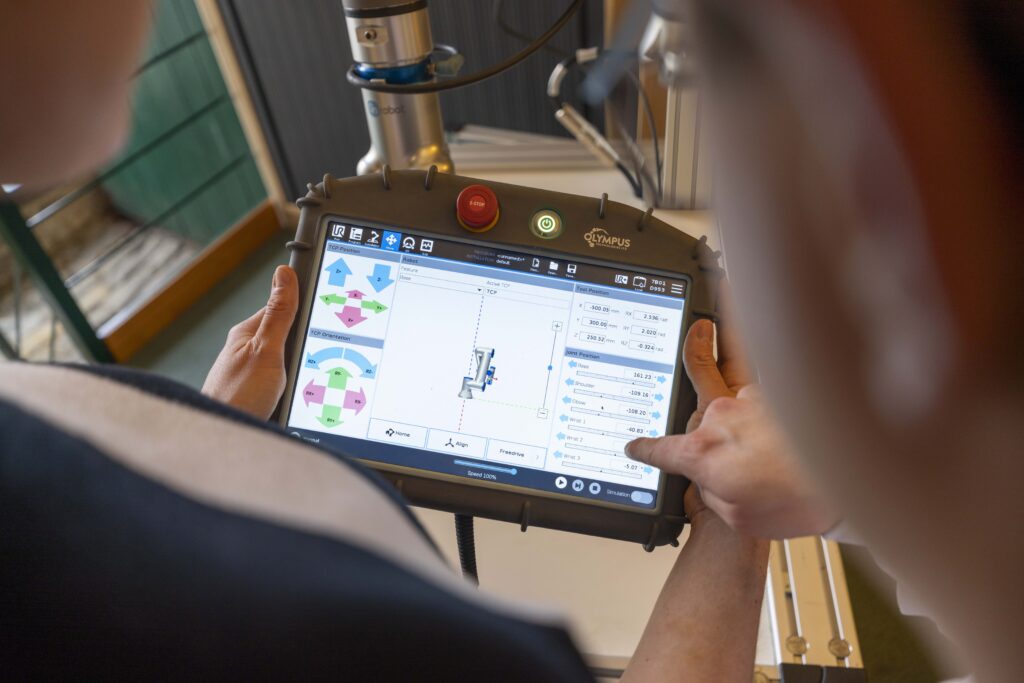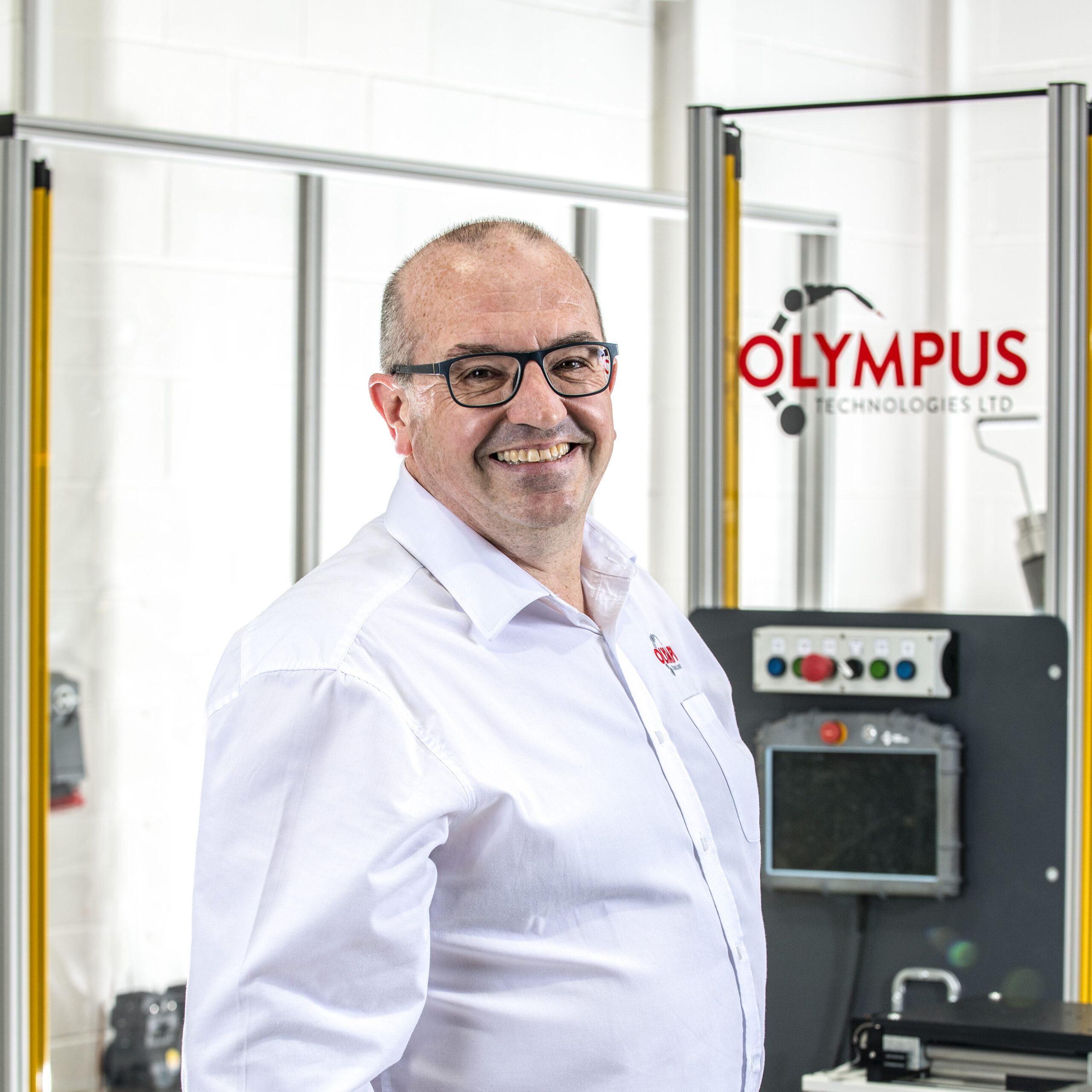Collaborative robots (cobots) are changing the face of industrial automation by allowing human workers and robotic systems to operate side by side.
Unlike traditional robots, which typically function behind safety cages and follow complex instructions, cobots are designed to collaborate with people in real-time.
This synergistic approach helps streamline repetitive tasks, reduce human error, and free personnel to focus on higher-value tasks.
Below, you’ll find a best practice guide on cobot implementation, complete with risk assessment tips, advice on robotic systems integration, and pointers for measuring success, all while maintaining a safe and efficient working environment.
Understanding Cobot Technology

What Are Cobots?
A cobot is a collaborative robot built to work directly alongside human operators. This cobot technology typically features:
- Safety Sensors and Vision Systems: Minimises collision risks and improves human-robot cooperation.
- High Accuracy and Reliability: Excellent for material handling, assembly, machine tending, and welding tasks.
- User-Friendly Programming: Many systems use graphical user interfaces or simulation software accessible on teach pendants and/or laptops to reduce the need for extensive programming knowledge.
Example: Universal Robots, a pioneer in the collaborative robot space, introduced user-friendly arms that can be configured with minimal coding, greatly expanding the reach of cobot automation.
Why Cobots Matter
- Adaptability: Cobots handle diverse tasks and adapt to changes in your production line.
- Labour Shortages: Ideal for tackling mundane or time-consuming roles, enabling your human workforce to focus on complex tasks.
- Cost-Effective: With lower setup expenses than some other robotics solutions, cobots frequently pay for themselves quickly.
- Quality Control: Automating repetitive tasks with high precision lowers defect rates and results in high quality results.
Selecting the Right Cobot for Your Facility

Because each workplace has its own demands, finding the right cobot involves evaluating capabilities against your specific task requirements.
Payload Capacity
- Determine the maximum payload based on the heaviest items in your workflow. For metal fabrication, this might be critical due to hefty components.
Reach and Workspace
- Ensure the cobot’s arm can move freely in your environment without impeding human workers or other machinery.
Safety Features
- Investigate collision detection, built-in safety sensors, and relevant safety standards to ensure a safe shop floor.
Integration Needs
- Check whether your chosen cobot plays well with other robotics solutions. Seamless robotic systems integration is vital for smooth data exchange and synchronisation.
Choosing the Right Robot Integrator

If your workflow is especially intricate, such as combining multiple robotic arms or advanced automation software, choosing an experienced system integrator can ensure a smooth installation process. These professionals help fine tune and tailor cobot automation to your existing processes, adhering to safety standards and offering greater efficiency and benefits to companies.
Preparing for Cobot Implementation
Risk Assessment
Before deploying any robot, you would carry out a thorough risk assessment to identify potential hazards to enable your system integrator to:
- Pinch Points & Collision Risks: Map out where the cobot moves and ensure clear paths.
- Electrical Safety: Check cable management and grounding for your entire robotic systems network.
- Emergency Measures: Place emergency stop buttons in accessible locations, and verify compliance with updated safety standards (e.g., ISO 10218).
Workspace Layout and Planning
- Space Allocation: Make sure the working environment provides enough room for both the cobot and humans.
- Optimal Workflow: Position the cobot so it can conduct specific tasks without frequent repositioning or reprogramming.
- End Effectors & Tooling: Choose the correct tool (grippers, suction cups, or welding heads) to handle each job efficiently.
Programming and Integration

User-Friendly Programming
Modern cobot technology often includes:
- Graphical User Interfaces: Drag-and-drop features that simplify the programming process.
- Simulation Software: Allows you to plan and fine tune tasks virtually, minimising errors before the cobot goes live on the production line.
- Teach Pendants programming: Lets you guide the cobot’s arm manually, recording each movement for precise replication.
Robotic Systems Integration
Effective robotic systems integration ensures your new cobot communicates with:
- Existing Controllers: Check I/O compatibility, data formats, and real-time feedback loops.
- Manufacturing Execution Systems (MES): Automate workflows and track performance across the facility.
- Quality Control Modules: Use data from the cobot to spot inconsistencies quickly and maintain high quality results.
Operating and Maintaining Your Cobot
Operational Guidelines
- Calibration & Setup
- Follow the manufacturer’s instructions for calibration. A well-aligned cobot is crucial for high precision in cobot’s tasks.
- Safety Check
- Regularly test safety features like collision sensors, vision systems, and emergency stops.
- Documentation & Training
- Offer hands-on training to operators and provide up-to-date manuals detailing any complex instructions.
Maintenance Essentials
- Regular Inspections: Check for wear on joints, end effectors, and electrical connections.
- Software Updates: Keep the cobot’s operating system current for optimal performance and security.
- Performance Analysis: Monitor cycle times, downtime, and error rates. If you spot inefficiencies, adjust or fine tune your cobot’s movement patterns.
Longevity Note: A well-maintained cobot can remain operational for over a decade, delivering a cost effective return on investment.
Measuring Success
Key Performance Indicators (KPIs) gauge whether your cobot implementation is hitting the mark:
- Productivity Gains
- Evaluate if cycle times have improved or if you’ve successfully increased production volumes.
- Quality Control
- Track whether defect rates have gone down since introducing cobot automation.
- Workplace Safety
- Record any changes in accident or near-miss incidents to ensure that integrating collaborative robots hasn’t inadvertently raised risks.
- Employee Satisfaction
- Since cobots can take over time-consuming or repetitive elements, check whether staff can now focus on more engaging, higher value tasks.
Frequently Asked Questions (FAQs)

1. How do cobots differ from traditional robots?
Cobots offer safer interactions with human workers, usually without safety cages, thanks to safety sensors and built-in vision systems. Traditional robots can perform complex tasks at higher speeds but typically require guarded cells.
2. Do I need coding or programming knowledge to set up a cobot?
Many modern cobot platforms feature graphical interfaces or teach pendants so that even users with minimal programming knowledge can operate them. Advanced programming tasks might need professional support, but basic operation is generally straightforward.
3. Which industries benefit from cobot technology?
Fields like metal fabrication, automotive industry, electronics, and food processing find cobots helpful for repetitive tasks such as assembly, welding tasks, and machine tending.
4. How can cobots help address labour shortages?
By automating tedious or physically demanding tasks, collaborative robots reduce strain on workers and fill gaps in staffing, boosting overall efficiency and productivity.
Final Thoughts
Cobot technology presents an accessible route to automation, helping companies big and small optimise their production line and tackle ongoing labour shortages.
By conducting a thorough risk assessment, selecting the right cobot, and following proper robotic systems integration protocols, you can seamlessly transform repetitive tasks into an automated process, freeing your staff to focus on innovation, strategy, and complex tasks.
Key Takeaway: Successful cobot implementation hinges on careful planning, regular maintenance, and continuous improvement. Whether you work in metal fabrication or the automotive industry, a well-chosen cobot can offer high quality results and sustainable returns.
Olympus Technologies is a leading cobot and robot integrator based in Huddersfield with 35 years' experience in robotic integration, get in contact today to find out how we can support your company in taking steps forward in your automation journey.
References
- International Federation of Robotics (IFR) - World Robotics Reports
- ISO 10218 - Robots and Robotic Devices - Safety Requirements for Industrial Robots
- Universal Robots - Official Website for user-friendly robotics solutions
By following these guidelines and continuously adapting, you’ll stay ahead in the world of cobot automation, paving the way for cost-effective operations and long-term success in a competitive market.














